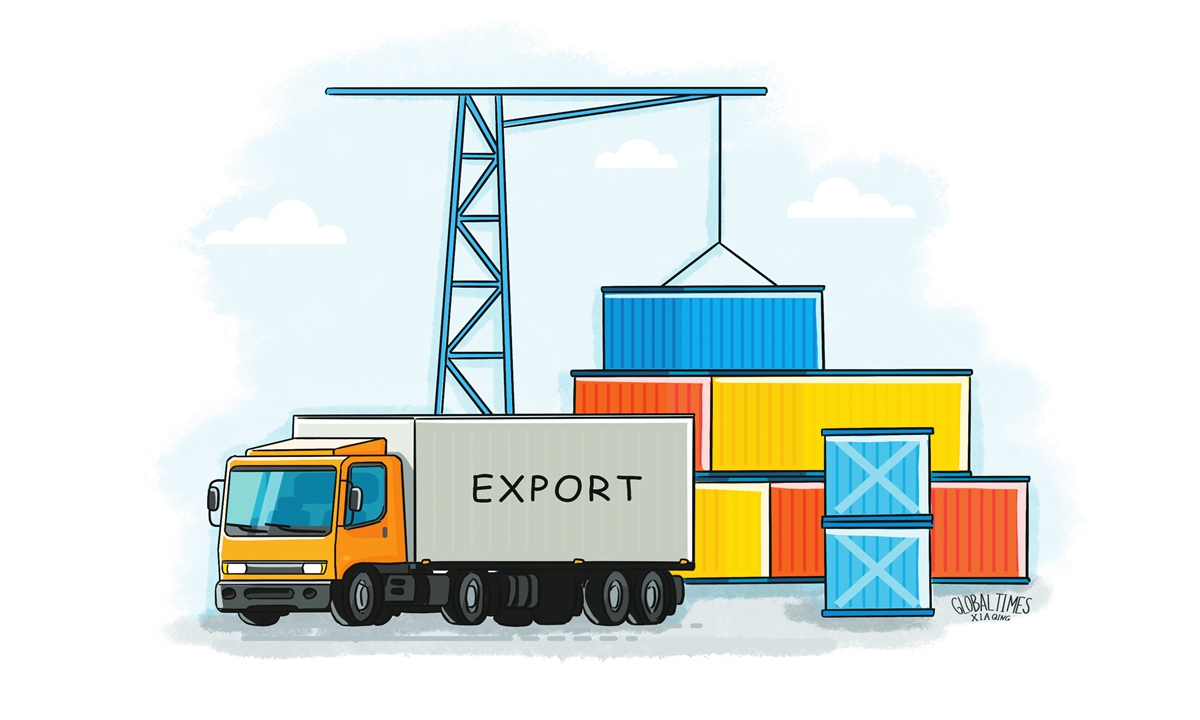
Illustration: Xia Qing/GT
In recent years, a question frequently posed by certain Western media outlets is whether Vietnam could replace China as the "world's factory?"
This query has ignited debate, fueled by global restructuring in the industrial supply chain. However, fresh insights from recent Chinese customs data offer a new perspective. Contrary to the pessimistic projections voiced by some Western media outlets regarding China's economic prospects, the data tell a different story. While Vietnam has undeniably emerged as a rising force in global manufacturing, it is still far from displacing China. China's manufacturing sector and foreign trade continue to thrive, evolving in both quality and scale, and nurturing increasingly robust industrial cooperation with Vietnam.
According to data released by China's customs on Monday, China's total trade with Vietnam, measured in US dollars, grew by 13.5 percent in 2024. Specifically, China's exports to Vietnam increased by 17.7 percent, while imports from Vietnam rose by 7.2 percent. Bloomberg highlighted the rapid growth of China's exports to Vietnam, noting that for the first time, China exported more to Vietnam than to Japan.
China's exports to Vietnam have surged in tandem with the rapid expansion of Vietnam's manufacturing sector. As reported by Vietnam news outlet Vietnamplus on Monday, the country's industrial sector made significant strides in 2024, with the industrial production index rising by 8.4 percent year-on-year. This swift growth in manufacturing has driven greater demand for imported intermediate goods, ranging from raw materials to components for electronic gadgets. Another Vietnamplus report in last August noted that both domestic processing and manufacturing firms, as well as foreign-invested enterprises, continue to rely heavily on imports for raw materials, intermediate products and production machinery.
A substantial share of China's exports to Vietnam comprises intermediate goods. Although figures for 2024 are not yet available, trends from 2023 paint a clear picture. In the first 11 months of 2023, intermediate goods represented 69.8 percent of the total trade between the two nations. The expansion of Vietnam's manufacturing sector has fueled growing demand for intermediate goods, creating significant opportunities for China's exports to Vietnam.
Clearly, China has seized this opportunity. In 2024, the country experienced impressive growth in its exports to Vietnam. While continuing to develop low-end, labor-intensive goods, China's competitiveness is steadily increasing in high-end manufacturing, particularly in key segments of the industrial chain, such as high-value-added components. As a result, intermediate goods now make up a substantial portion of China's total exports. In 2023, China exported 11.24 trillion yuan ($1.53 trillion) worth of intermediate goods, accounting for 47.3 percent of its overall exports. This growth can largely be attributed to the significant strides China has made in upgrading and transforming its manufacturing sector.
As the "world's factory," China has continually enhanced both the scale and quality of its global product offerings. This progress is evident in the growth of its exports, alongside its unwavering commitment to promoting the trade of intermediate goods. Vietnam, like many other importing nations, has reaped the benefits of China's exports of these goods. Chinese products, particularly essential components, have played a positive role in supporting the growth and development of manufacturing industries across these countries.
In recent years, certain Western media outlets have raised the question of whether Vietnam will replace China as the "world's factory." The answer to this zero-sum perspective is a resounding no. In reality, the Asian industrial landscape is moving in the direction of expanding cooperation and integration.
Rather than one replacing the other, industrial chains between China and Vietnam are deepening their mutually beneficial cooperation. In this process, Vietnam's manufacturing sector is increasingly importing from China and steadily expanding. At the same time, China's exports to Vietnam are also on the rise. China's manufacturing export capacity is not only growing in volume but also improving in quality, achieving a continuous progression toward high-quality development.
The author is a reporter with the Global Times. bizopinion@globaltimes.com.cn




